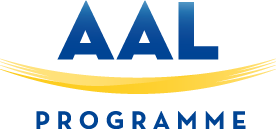Efficient components that work together
Much research has taken place in this field over the last 10 years in Europe, and while significant progress has been achieved, the transfer of research results into wide-scale adoption is only starting to emerge. One reason for this fact is certainly the complexity of the topic, both in terms of technology and business models / logistics.
AAL systems consist of a combination of products and components from various industrial sectors (including medical technology, home automation, telecommunications and consumer electronics) and vendors, and their operation requires an “ecosystem” of service providers for planning, installation, maintenance, operation and service provision. The AAL Programme made an attempt to clarify some of the main myths about this topic and to promote the interoperability in this field.
The final report
This report summarizes the work and results of the AAL Joint Programme “Support Action
Aimed at Promoting Standards and Interoperability in the Field of AAL”, which has been running
from July 2013 to spring 2014. The goals of this support action were two-fold:
- to make existing standards more easily accessible by identifying use-cases covering the topics of all six calls of the AAL JP published to date and by mapping technical standards to these use-cases such that the
result provides guidance on the use of standards for the AAL community;
- To raise the awareness of existing standards in the field of AAL by organising two workshops and inviting partners of the AAL JP projects and the wider AAL community.

AAL use cases and integration profiles
The central goal of this action is to make existing standards more easily accessible through use-cases:
- to identify a set of use-cases covering the AAL domain, in particular covering the topics of all six calls for proposals published by the AAL JP until 2013 and other programmes like FP6 and FP7;
- to identify and match existing technical standards to these use-cases that can help promote interoperability;
- to analyse these existing technical standards and provide guidance on their use for AAL JP projects and the wider AAL community.
Read these two reports:
Report on the first 6 calls of the AAL JP

Report on a collection form AALJP, the FP6 and FP7

Other references
A multitude of such standards that are readily applicable to the “AAL world” exist already, covering all kinds of communication protocols. A repository created by the AALIANCE2 project references more than 400 standards of relevance for the AAL sector.
To some degree, this large body of standards creates a new problem: Which ones are relevant for a particular application or use-case? Which standards are the best choices? To get a good orientation open this repository online.


